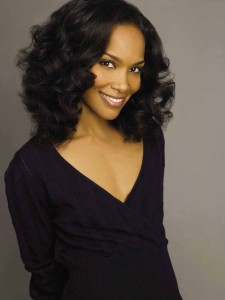
Being Mary Jane is a television series produced by BET that tells the story of an African American woman. Created by Mara Brock Akil, who also served as an executive producer and one of the writers, and directed by Salim Akil, Regina King and Rob Hardy, the series is an interesting glimpse into the work, social and family life of Mary Jane (Gabrielle Union).
The character first started speaking to Akil during her work on Girlfriends, around Season 6. “I started realizing there was more I needed to say about modern women and, more specifically, modern women who are African American than what the Girlfriends canvas was allowing,” said Akil. Not having that canvas, Akil did the only thing she could, which was taking copious notes on the character of Mary Jane. “The character would talk to me and I knew that was not appropriate for Girlfriends so I wrote it down for this future character.” This went on for four years until the partnership with BET began.
The writing credits are shared throughout the series between Akil, Devon Greggory, Erika Graham, Erica Anderson, Jessica Mecklenburg, Laurence Andries, Adam Giaudrone, Njeri Brown, Craig Quinn and Melora Rivera.
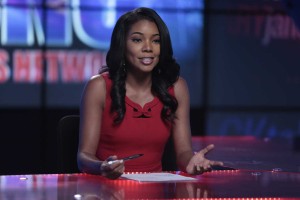
Akil created two key structural elements to tell the story well. Each season focuses on an overarching plot. For example, in the first season Mary Jane has an affair. There are other things going on, but the affair is the line running through it all.
The other structural element was hitting a set of four quadrants that existed in Mary Jane’s day to day: family, work – in front of and behind the camera, her love life and her alone moments. The alone moments are significant because they show how Mary Jane really feels about the matters in her life.
So much of shaping the story happens through the editing, with editors Richmond Riedel, Tom Costantino, Jacques Gravett and Lauren Schaffer contributing to the storytelling process. Akil adores editing and she looks at it as an opportunity to take a breath and rewrite. “There are a lot of things I discover about the show during editing and we do take our time in editing.” The director has a cut. The editor has a cut. “And I come in with my cup of tea and we sit there and we really tweak it until it’s right,” Akil explained. Tone, pacing and every aspect of the story is explored and edited to satisfaction. “We spend a lot of time on the first act, trying to set it up, set the tone of what the viewer is going to experience and finding that right piece of music.”
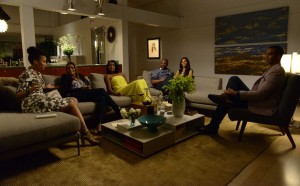 The music by Kurt Farquhar adds another dimension of emotion to the images once editing is done. “His work is so detailed, you will see themes for any strong relationship Mary Jane has, including her love life and her family dynamics,” Akil stated.
The music by Kurt Farquhar adds another dimension of emotion to the images once editing is done. “His work is so detailed, you will see themes for any strong relationship Mary Jane has, including her love life and her family dynamics,” Akil stated.
Kier Lehman is the show’s music supervisor and his work is also indispensable. “He’s very important when it comes to our needle drops,” Akil said. “We really take our time finding the right one because you can totally change the tone of the episode by the wrong needle drop or you could make it soar by the right one.” Music is so important to the show that it takes the place of Mary Jane’s voiceovers. “Music oftentimes tells the viewers what she really feels inside. We pride ourselves on our music choices led by Kier,” Akil noted.
The cinematography by Michael Negrin was inspired by a sense of transparency and an abundance of portrait-like shots. “It’s pretty pictures of a life that’s maybe not so pretty,” Akil noted. The lighting, the mood and all the other details were planned carefully. “What I realized when creating the show is that there are images that have not been encapsulated or documented for scripted series for black characters. We still have so far to go so it’s fun to realize, I don’t think I’ve seen this on TV before. I haven’t seen this image or this look or this moment.” For example, these shots might consist of the camera being outside the house, at a distance, looking in. “It’s almost as though if you were walking past Mary Jane’s house, this is what you might see.”
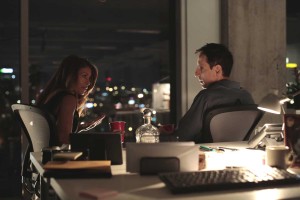 Gary Frutkoff was responsible for production design. Akil met him on the set of Sparkle and immediately thought of him for this series. It has been an absolute joy for her to work with him. “We started off with our pilot on location and the translation of that to set. I think he and his team have done an amazing job. Our newsroom looks real because I feel like in essence it is real,” she said.
Gary Frutkoff was responsible for production design. Akil met him on the set of Sparkle and immediately thought of him for this series. It has been an absolute joy for her to work with him. “We started off with our pilot on location and the translation of that to set. I think he and his team have done an amazing job. Our newsroom looks real because I feel like in essence it is real,” she said.
“We spend a lot of time talking about depth, being able to see layers beyond Mary Jane,” she noted. Mary Jane’s entire house was built on set. The only thing missing was the garage. “Everything else was literally there and it was important because as we shoot, the director has so much play you could be in the living room and see her in her bedroom. These things really kept the voyeur perspective that is really important to the storytelling and to the viewer’s experience.”
The costume design is credited to Ruth Carter and Provi Fulp Ramphal. Akil also met Carter on Sparkle and Carter agreed to join the team even though she had never designed for television before. “Everything is derived from the character. Mary Jane is representative of a lot of successful modern women who are single and have disposable income. So you can see that reflected in her house and the car she drives and also certainly her wardrobe,” Akil explained.
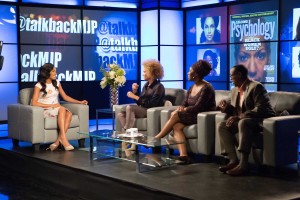 Versatility is key to many of the clothing pieces Mary Jane wears. For example, she might wear a backless dress to work. “You don’t see an anchor with her back completely out, but on camera you don’t know that her back is out because she’s sitting in a chair,” Akil said. Or perhaps Mary Jane might wear her dress with a jacket on at work. But on a date, she would wear the same dress without the jacket. “In a real woman’s life, if she’s that busy, she’s got to go to work. She’s got to be on air. When she’s on air, they may add or take away a piece of jewelry to reflect her being professional on air.” The key is keeping her outfits realistic to the life of a busy professional. Outfits are changed slightly or might be accessorized differently as she runs from one place to the next.
Versatility is key to many of the clothing pieces Mary Jane wears. For example, she might wear a backless dress to work. “You don’t see an anchor with her back completely out, but on camera you don’t know that her back is out because she’s sitting in a chair,” Akil said. Or perhaps Mary Jane might wear her dress with a jacket on at work. But on a date, she would wear the same dress without the jacket. “In a real woman’s life, if she’s that busy, she’s got to go to work. She’s got to be on air. When she’s on air, they may add or take away a piece of jewelry to reflect her being professional on air.” The key is keeping her outfits realistic to the life of a busy professional. Outfits are changed slightly or might be accessorized differently as she runs from one place to the next.
Mary Jane dresses down at home. She wears relaxed looks like t-shirts and shorts. “The Uggs have been a conversation. Ruth Carter has said, ‘We have to get rid of the Uggs,’ and I was like ‘No! Sometimes they’re ugly or they’re old, but they’re comforting to Mary Jane,'” Akil said. All these details are carefully attended to because they are so important. The clothes are a way to define the characters in an unobtrusive way. “A lot of times I want people to discover these characters. I want you to figure out who they are with details like what they’re wearing or not wearing.”
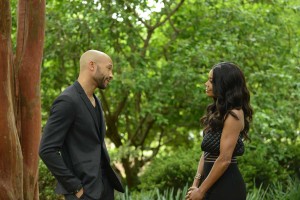 Working on the series has brought many joyful experiences to Akil. One stands out. It happened during the pilot and it moved her especially. “It was just a very simple thing. I worried too much when I wrote it then when I saw it executed, I was like ‘OK, we’ve got it. This is it. We’re going to be fine.’ It was when Omar Hardwick had to throw up on Mary Jane. She’s watching him sleep and she’s asking God to give her a sign that he’s the one. And she’s sitting there smiling with the thought of this man in her bed and thinking maybe he’s the one, and the next beat he throws up on her. Talk about details – the throw-up looked real. When he did it, it looked real,” Akil reminisced. She knew then she had a winner of a show on her hands and the beat of that moment has stayed with her.
Working on the series has brought many joyful experiences to Akil. One stands out. It happened during the pilot and it moved her especially. “It was just a very simple thing. I worried too much when I wrote it then when I saw it executed, I was like ‘OK, we’ve got it. This is it. We’re going to be fine.’ It was when Omar Hardwick had to throw up on Mary Jane. She’s watching him sleep and she’s asking God to give her a sign that he’s the one. And she’s sitting there smiling with the thought of this man in her bed and thinking maybe he’s the one, and the next beat he throws up on her. Talk about details – the throw-up looked real. When he did it, it looked real,” Akil reminisced. She knew then she had a winner of a show on her hands and the beat of that moment has stayed with her.





